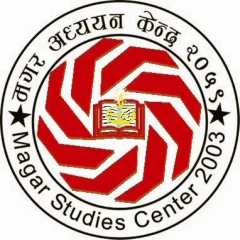Gulati, M. N. (2003). Tibetan Wars Through Sikkim, Bhutan & Nepal, New Delhi: Manas Publications. Annotation by: Dr. Govind Prasad Thapa
The book is divided in nine chapters. As the title speaks of itself, this work is basically about the wars. The writer has analysed these wars with military perspectives as the writer was Colonel of the army. The fifth chapter deals with Nepal Wars which elaborately contains details about the geo-political background, the ancient history, Kinloch Expedition, Logan Mission and border conflicts, the first Gorkha-Tibet war 1788, the Treaty of 1789, China retaliates 1790-92, Anglo-Nepalese war 1814-16, Treaty of Sugauli and Second Gorkha-Tibet War 1854-55. This book helps scholars on critically analyzing the operational aspects of wars. The author mentions about a tactically important recruitment policy of Prithvi Narayan Shah in his army: “Prithvi Narayan Shah not only collected loyal, courageous and battle-tested sirdars around him, he also reorganized his army. He made an important departure in the recruitment policy. While so far the army was caste-based in that only Thakurs were considered true Kshatriyas, and hence for for soldiering. This considerably restricted the recruitment-base, keeping the army strength quite low. Prithvi Narayan departed from the traditional castebased army and opened the doors to all castes—Magars, Gurungs and Khas et al. He organized his heterodox caste army into a fine fighting machine, and could replace his losses from all classes of people, whereas his enemies were restricted to Thakurs only.”
Hamilton, F. B. (1819 & Reprint 1990). An Account of the Kingdom of Nepal and of the Territories Annexed to this Dominion by the House of Gorkha. New Delhi: Asian Education Services (First published in 1819; first reprint in 1986 by Asian Education Services). Annotation by: Dr. Govind Prasad Thapa
This book is an account about the history of the country, laws and government, inhabitant, royal families which governed States, Baise and Chaubise Rajas, Sikkim, Kumaon, Kashmir, and Kangra. Hamilton carried negative impressions about Kasiyas people: “I am told, that, wherever mentioned in ancient records, like the Kirats, their neighbours to the west, the Kasiyas are considered as abominable and impure infidels.” (p.8) Hamilton further writes that he “has been assured, that, in the sacred book of Hindus, that is to say, in the Puranas attributed to Vyas, the Khas and Kiratas, the ancient inhabitants of mountains, are always spoken of as impure and infidel.” (p. 11) Concerning the colony from Chitaur he received another account, from the Mahant that Chaturbhuja, a prince of the Sisaudhiya tribe, having left Chitaur, conquered Kumau and Yumila, where he established his throne, from whence his family spread to Palpa Tanahung and Kirats.(p.15) The author also doubts about many chiefs, and especially the Palpa Tanahung and Makawanpur families being descendent of the Chitaur prince. He claims that “the family of Gorkha, according to Sadu Ram, a good authority, is, in reality, of the Magar tribe.” (p. 26) About Magars, the writers adds, “The Magars, called Mungurs by Colonel Kirkpatrick, occupied a great proportion of the lower hills in western parts, seem to have received the Rajput chiefs with much cordiality, and have now adopted a great part of the ferocious customs of these mountain Hindus. They eat copiously the flesh of hogs, goats, sheep, ducks and fowls, but now abstain from beef. They are much addicted to intoxication, and are excessively cruel and treacherous; but they are men of great bodily vigour and mental activity. They have, in general, submitted to the guidance of the same Brahmans and Sannyasis that instruct the Rajputs; but formerly had priests pf their own tribe called Damis, and seemed to have worshipped chiefly ghosts. They marry only one wife.”
